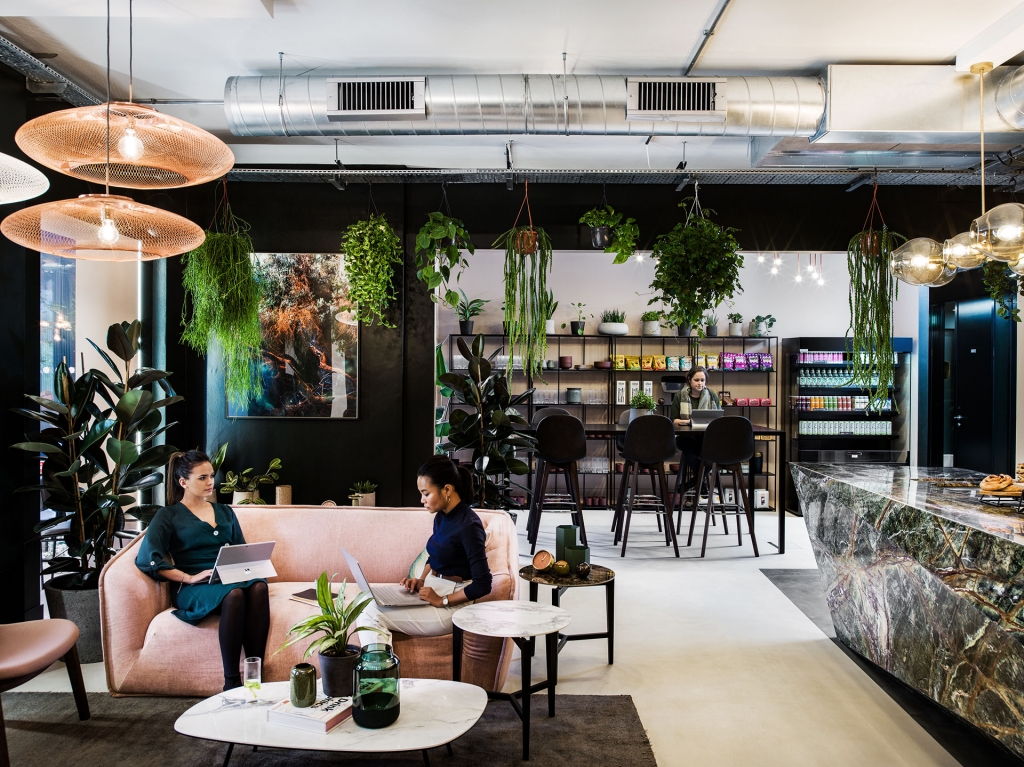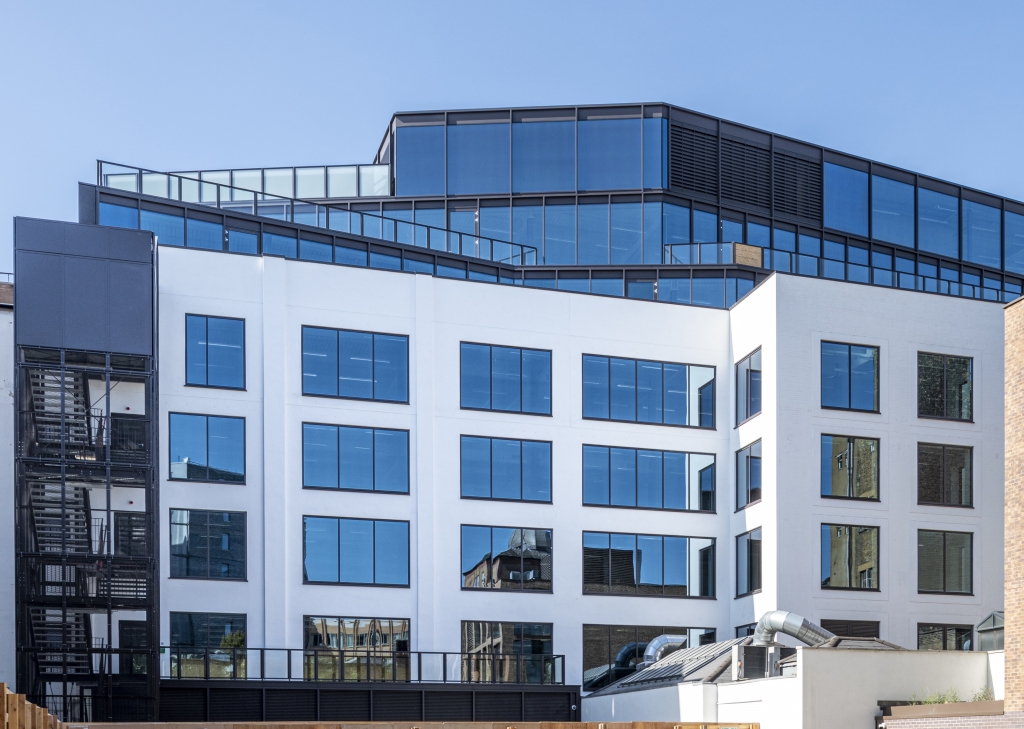Engineering for Health
Whether you’re planning a refurbishment or starting a new development, creating a healthy office building needs to be higher on your agenda than ever before.
Healthy buildings might not be something that many have previously considered when choosing to develop, purchase or rent a commercial space and almost definitely not when applying for jobs, but Covid-19 has changed the global landscape and we are thinking about our health now more than ever.
How can buildings help. What have they got to do with wellness?
They can have everything to do with it.
Unhealthy buildings can be a major factor in employee sickness costing a company a huge amount of revenue in lost hours. The detrimental effects of an unhealthy building are well-recognised, so much so that there is a condition called sick building syndrome which refers to symptoms that a person may get – headaches, rashes, poor concentration and fatigue, dry itchy skin and eyes, runny or blocked nose – relating specifically to spending time in a particular building.
What can we do?
Design and build healthier buildings!
A healthy building has the power to improve concentration, decrease the rate of microbial transmission and increase overall feelings of wellbeing. And, when people feel better, they work better: employees who are happier in their work environment are more productive, making the business more productive and therefore increasing revenue.
Putting steps in place, either during construction of a new build or during a refurbishment of an existing building, may seem costly but it’s about looking beyond the initial investment. Employees enjoying their work-space, breathing clean air and drinking clean water will take fewer days off with illness. They’re more likely to shout about how great their company is: your company will be more likely to get brand recognition for employee wellbeing and attract more talent.
Never before have employers been under so much scrutiny regarding public health issues and the way they treat their employees.
By far the biggest cost to a company is their employees.
Investing with a focus on health and well-being benefits workers, but also a company’s bottom line, with lower risk of employee burnout, increased productivity and higher job satisfaction.
So how can you create a healthy building?
There are a number of factors to consider:
Air
The design of the ventilation system is so important. Think about getting in the highest amount of fresh air possible and getting it moving through your building, with less air recycled. More fresh air leads to increased brain function which in turn leads to higher productivity. Filter the air at source to rid it of particulates and microbes as far as possible.
Water
Drinking water should be filtered. To attain the highest quality drinking water, we suggest UV disinfecting and localised carbon filters can be fitted at every drinking water outlet with additional carbon filters just before you drink.
Materials
Use clean materials which will not introduce pollutants into the building. Use materials which do not harbour microbes, e.g. use copper for tea-making surfaces rather than plastics which allow viruses to ‘survive’ on their surface for extended periods.
People movement
Build healthily, incorporating multiple stairwells in new builds to allow passage of people from one floor to another with no over-crowding. Refurbish existing stairwells to allow a more enhanced user experience and encourage use of stairs rather than the lift. This reduces microbial transmission and increases opportunity for exercise within the working day.
Lighting
Ensure access to daylight for all staff and windows that people can look out of, where possible, preferably over a green space (difficult in some places where you may need to bring the green indoors – see below).
Heating and cooling
Design your building to be not only thermally efficient but to keep a constant temperature with feedback controls. People are uncomfortable when temperatures are too low and lose concentration when temperatures increase. Increased temperatures also encourage the reproduction of microbes.
Sound
Provide quiet areas as well as areas with background noise so people can choose to work where they feel most productive.
Smart technology
Use automated smart technology to track occupancy densities, air and water quality as well as humidity and temperature.
Add plants
Humans, in general, are happier in a green space or by a window where they can see a green space. Bring the green space into your building by using a planting consultant who will can design where your plants will go and select plants which absorb higher levels of carbon dioxide and produce more oxygen, thus increasing air quality at the same time as providing a calming and inspiring space to work.
According to the ONS, an estimated 141.4 million working days were lost because of sickness or injury in the UK in 2018, the equivalent to 4.4 days per worker 1. One of the main reasons for absence was minor illness such as coughs and colds. Healthy buildings can help prevent the spread of such diseases, and, with employers encouraging staff to stay at home when they are ill – reducing presenteeism – these infectious diseases won’t have the chance to spread between employees and affect the whole work force of a company.
Another major reason for absence is mental health – buildings which are designed and created with the occupier in mind contribute to an overall sense of wellbeing and can reduce anxiety about going into work, thus reducing the number of days individuals take off due to mental health and increasing overall productivity of your business.
Carl Carrington, CEO Milieu, says, “At Milieu, we’re passionate about creating healthy spaces and making the environment of the building as healthy as possible for the people who occupy it”.
The WELL Building standard is a performance-based system for measuring, certifying and monitoring features of the built environment that impact human health and well-being.
In August 2019, Milieu were engaged by Uncommon to help design and create what is targeted to be the first WELL platinum V2 core building in the UK. This shared office space is being developed in Holborn, London, where outside air quality is pretty much as poor as you can get – our challenge is to make it as good as you can get.
Milieu means the people, physical, and social conditions and events that provide the environment in which someone lives. At Milieu, we believe that healthy buildings are essential for people to function and thrive. Building Services Engineering plays a key part in this by creating a comfortable environment within which people, live, work and play.
—
At Milieu, we’re passionate about creating healthy spaces and making the environment of the building as healthy as possible for the people who occupy it.
To find out more about the services we offer and how we can help you make your building healthier, please call us on: 020 7183 3943 or email: info@milieuconsult.com
—
1. https://www.ons.gov.uk/employmentandlabourmarket/peopleinwork/labourproductivity/articles/sicknessabsenceinthelabourmarket/2018
Uncommon | Holborn
A major refurbishment of this 1960s 9,700m.sq existing building in High Holborn will deliver high-quality, flexible co-working office space.
The Hickman | Whitechapel
The existing building was at the end of its economic life in Tower Hamlets. It has been significantly remodelled, whilst retaining the existing warehouse building structure at the lower levels and adding a new core and 3 story extension.




